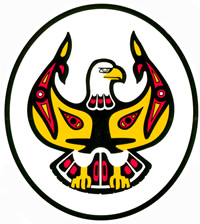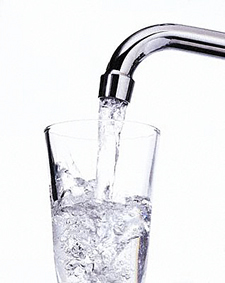Lummi Tribal Water System
 The Lummi Tribal Water District is committed to protecting our community’s public health by providing safe and clean drinking water. The District provides water service to over 1,100 customers on the Lummi Reservation. The District derives its authority and rules of operation from the “Sewer and Water Code”.
The Lummi Tribal Water District is committed to protecting our community’s public health by providing safe and clean drinking water. The District provides water service to over 1,100 customers on the Lummi Reservation. The District derives its authority and rules of operation from the “Sewer and Water Code”.
The code establishes a Water Board consisting of three members to direct the District’s operation, with oversight by the Lummi Indian Business Council. Two Water Board Members are Lummi Tribal members who are elected volunteers. The third is an elected Tribal Council member appointed by the Tribal Council.
The District is relatively rural in character, which means we have more pipe to operate and maintain per customer than typically found in urban areas which tends to result in higher operational costs. New water service is restricted to Tribal members and entities. There are several water associations providing water service on the reservation that are not affiliated with the District.
 The District operates one water system for the entire reservation. The primary source of water is from wells, but the District also maintains a connection with the City of Bellingham that is used when groundwater supplies cannot meet the needs of the community. The District contains approximately 217,500 feet of water pipeline, 10 wells, 4 reservoirs, 184 fire hydrants, over 1,000 water meters, and 56 water quality sampling sites.
The District operates one water system for the entire reservation. The primary source of water is from wells, but the District also maintains a connection with the City of Bellingham that is used when groundwater supplies cannot meet the needs of the community. The District contains approximately 217,500 feet of water pipeline, 10 wells, 4 reservoirs, 184 fire hydrants, over 1,000 water meters, and 56 water quality sampling sites.
The District is authorized and permitted to operate by the United States Environmental Protection Agency (– USEPA). We are required to meet all of the applicable standards of the Safe Drinking Water Act. The District is subject to periodic inspections (called sanitary surveys) of our facilities. The District is required to monitor and test water quality at the sources and throughout the distribution system.
On a daily basis the District tests chlorine. We also test for the following parameters as required by the — USEPA Ground Water Rule:
Coliform Bacteria
Nitrate and Nitrites
Inorganic Chemicals (IOC)
Volatile Organic Chemicals (VOC)
Synthetic Organic Chemicals (SOC)
Lead & Copper
Total Tri-Halomethanes (TTHM) and Halo Acetic Acids (HAA5)
Radionuclides
The District publishes a Consumer Confidence Report (CCR) summarizing the results for each specific year. If you have any questions about overall water quality or your specific service, please gives us a call at 360-758-7167.
